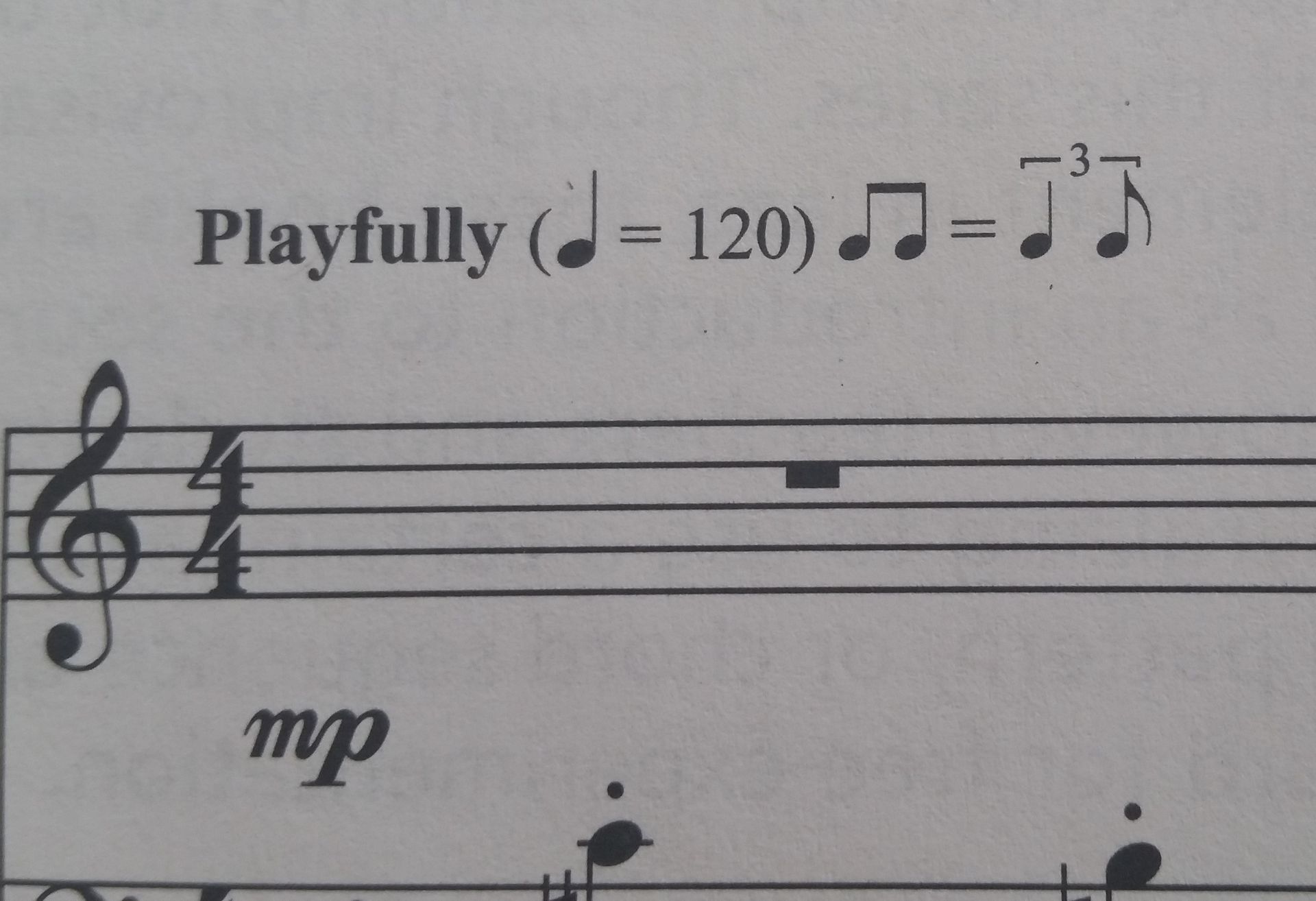Home>Production & Technology>Tempo>What Tempo Is Grunge Music


Tempo
What Tempo Is Grunge Music
Published: December 10, 2023
Discover the tempo that defined the grunge music era. Uncover the rhythmic intensity and unique beats that shaped this iconic genre.
(Many of the links in this article redirect to a specific reviewed product. Your purchase of these products through affiliate links helps to generate commission for AudioLover.com, at no extra cost. Learn more)
Table of Contents
Introduction
Grunge music, characterized by its raw and gritty sound, emerged in the 1980s and 1990s as a subgenre of alternative rock. This unique genre gained popularity in the Pacific Northwest, particularly in Seattle, and soon spread its influence throughout the world.
The term “grunge” itself is commonly associated with the Seattle music scene and became a cultural phenomenon in the early 1990s. Grunge music was highly influential, not only in the music industry but also in fashion, lifestyle, and art. With its loud, distorted guitars, angst-ridden lyrics, and a disregard for traditional musical conventions, grunge music offered a refreshing alternative to the polished and commercialized sound of the time.
Grunge music was a powerful outlet for many young musicians who expressed their disillusionment with mainstream culture and a desire for authenticity. It was deeply rooted in the underground punk rock movement, combining elements of punk, metal, and indie rock to create a distinctive sound that resonated with a generation.
In this article, we will delve into the fascinating world of grunge music and explore the tempo that defined this genre. We’ll discuss the origins of grunge music, its musical characteristics, and the influences that shaped its tempo. We’ll also highlight some notable grunge artists and their contributions to the genre.
So, put on your flannel shirt, crank up the volume, and let’s take a closer look at the tempo of grunge music.
Origins of Grunge Music
The roots of grunge music can be traced back to the punk and indie rock scenes that emerged in the 1980s. Bands like The Melvins and Green River, both hailing from Seattle, were early pioneers of the grunge sound. These bands, along with others like Mudhoney and Mother Love Bone, laid the foundation for what would become the grunge movement.
However, it wasn’t until the early 1990s that grunge music gained mainstream attention and became synonymous with the Seattle music scene. This was largely due to the success of bands like Nirvana, Pearl Jam, and Soundgarden, who achieved commercial success and brought grunge to the forefront of the music industry.
The cultural environment of Seattle in the 1990s played a significant role in the development of the grunge sound. The city was known for its rainy and gloomy weather, which seemed to reflect the mood and lyrical themes of many grunge songs. The DIY (do-it-yourself) ethos of the punk scene also heavily influenced grunge, with bands often recording and releasing their music independently.
Grunge music was characterized by its raw and unpolished sound. The music often featured heavy use of distortion and fuzz pedals on guitars, creating a gritty and aggressive tone. The lyrics of grunge songs tended to be introspective and introspection, often delving into themes of alienation, depression, and social criticism.
The influence of punk rock was evident in the rebellious and non-conformist attitude of grunge musicians. Bands embraced a DIY mentality, rejecting the glossy production values of mainstream rock in favor of a more rough and authentic sound.
Overall, the origins of grunge music can be traced back to the punk and indie rock scenes of the 1980s, with Seattle serving as the epicenter of the movement. The raw and gritty sound, along with the introspective and rebellious lyrics, defined the essence of grunge and set it apart from other genres of the time.
Musical Characteristics of Grunge
Grunge music, with its distinctive and rebellious sound, is characterized by several key musical elements. These characteristics contribute to the overall aesthetic and mood of the genre, setting it apart from other styles of music.
One of the defining features of grunge music is its heavy use of distorted guitars. The guitar riffs in grunge songs often consist of power chords played with massive amounts of distortion and fuzz. This creates a thick, gritty, and sometimes abrasive sound that adds to the raw and aggressive nature of the music.
In addition to the distorted guitars, grunge music often incorporates elements of punk and alternative rock. The influence of punk can be heard in the fast-paced and energetic drumming style, with relentless beats driving the songs forward. The bass lines in grunge are typically melodic and serve as a solid foundation for the overall sound.
Lyrically, grunge songs tend to be introspective and confrontational, dealing with themes of societal alienation, personal struggles, and disillusionment. The lyrics often reflect the angst and frustration of the generation that embraced grunge music as a form of escape and expression.
Another notable characteristic of grunge music is its dynamic range. While many grunge songs feature intense and heavy sections, they also incorporate quieter and more melodic moments. This contrast in dynamics adds depth and emotion to the music, creating a captivating listening experience.
Furthermore, grunge music often incorporates elements of unconventional song structures. Instead of following the traditional verse-chorus-verse format, grunge songs may feature extended instrumental sections, unconventional song progressions, and moments of improvisation. This adds an element of unpredictability and experimentation to the music.
Overall, the musical characteristics of grunge music are marked by distorted guitars, energetic drumming, introspective lyrics, dynamic range, and unconventional song structures. These elements combine to create a distinct and powerful sound that captures the raw emotions and rebellious spirit of the grunge movement.
The Tempo of Grunge Music
When it comes to the tempo of grunge music, there is no strict formula, as the genre encompasses a wide range of styles and influences. However, there are some commonalities that can be observed in the tempo of many grunge songs.
Grunge music often incorporates a mid-tempo or moderate pace, characterized by a steady and driving rhythm. This tempo allows for the raw emotions and intense energy of the music to shine through. It provides a solid foundation for the gritty guitar riffs, powerful drumming, and emotionally charged vocals that are characteristic of the genre.
While there are many grunge songs with a mid-tempo, there are also instances where grunge bands experiment with different tempos. Some songs may have slower, more introspective moments, creating a contrast with the heavier and faster sections. These shifts in tempo add depth and variation to the overall sound of the music.
It is important to note that the tempo of grunge music is not limited to a specific BPM (beats per minute). The range can vary greatly, depending on the specific song and the intentions of the artist. Some songs may have a faster tempo that incites energetic headbanging and moshing, while others may have a slower tempo that encourages a more contemplative and immersive listening experience.
Another aspect to consider is the use of tempo changes within a single song. Grunge bands often experiment with different dynamics, transitioning between slower and faster sections. These tempo changes can add intensity and emotional impact, keeping the listener engaged and captivated throughout the song.
Overall, the tempo of grunge music is characterized by a moderate pace, allowing for the raw emotions and energy to shine through. While there is flexibility within the genre, with variations in tempo depending on the specific song and artist, grunge music maintains a distinct and captivating sound that leaves a lasting impression on its listeners.
Influences on Grunge Tempo
The tempo of grunge music is influenced by a variety of factors, ranging from the musical backgrounds and influences of the artists to the cultural and emotional climate of the time.
One of the key influences on grunge tempo is the punk rock movement that emerged in the 1970s. Punk music was known for its fast-paced and high-energy tempo, fueled by the rebellious and DIY ethos of the genre. Many grunge bands drew inspiration from punk and incorporated elements of its tempo into their own music, resulting in a driving and energetic sound.
Another significant influence on grunge tempo is the alternative and indie rock scenes that were thriving during the same period. These genres often featured a more moderate and melodic tempo, allowing for introspective lyrics and emotional depth. Grunge artists, being part of the alternative rock movement, were influenced by this slower and more contemplative approach to tempo, incorporating it into their own sound.
The cultural and emotional climate of the 1980s and 1990s also played a role in shaping the tempo of grunge music. This was a time of social and economic uncertainty, with a growing discontent among young people. The slower and moderate tempo of grunge allowed for the expression of this frustration, providing a platform for artists to convey their feelings of alienation and disillusionment.
Furthermore, the Seattle music scene, with its distinct geographic and cultural influences, had an impact on the tempo of grunge music. The gloomy and rainy atmosphere of the Pacific Northwest, combined with the DIY mentality of the local punk scene, contributed to the development of the grunge sound and its tempo. These factors created an environment where musicians were encouraged to experiment with different tempos, resulting in the unique and diverse range of grunge music.
It is also important to mention the personal influences of individual grunge artists on the tempo of their music. Each artist brought their own musical background and preferences to the genre, contributing to the overall diversity of grunge tempo. Bands like Nirvana, Pearl Jam, and Soundgarden, while all considered part of the grunge movement, had distinct musical styles and tempo variations within their respective discographies.
Overall, the tempo of grunge music is influenced by a combination of factors, including the punk and alternative rock scenes, the cultural climate of the time, the Seattle music scene, and personal preferences of the artists themselves. These influences have shaped the diverse range of tempos found within the grunge genre, contributing to its raw and captivating sound.
Notable Grunge Artists and Their Tempo
Grunge music was propelled into the mainstream by a number of influential and talented artists. Each of these artists brought their own unique style and tempo to the genre, contributing to the diversity and impact of grunge music as a whole.
Nirvana is arguably the most well-known grunge band, led by the enigmatic Kurt Cobain. The band’s music showcased a range of tempos, from the explosive and fast-paced “Smells Like Teen Spirit” to the more introspective and slower “Something in the Way.” Nirvana’s ability to transition between different tempos within a single song added depth and intensity to their music, solidifying their status as one of the defining acts of the grunge era.
Pearl Jam, another prominent grunge band, had a distinctive tempo of their own. Known for their powerful and emotionally charged performances, Pearl Jam balanced between mid-tempo rockers like “Jeremy” and more laid-back, melodic tracks such as “Black.” Their ability to vary the tempo while maintaining their signature sound contributed to their widespread popularity and longevity in the music industry.
Soundgarden, led by the iconic Chris Cornell, explored a heavier and alternative metal sound within the grunge genre. Their songs often featured intricate guitar work and a range of tempos, from the driving rhythm of “Outshined” to the slower, more brooding tempo of “Black Hole Sun.” Soundgarden’s ability to seamlessly blend different tempos with intricate musical arrangements made them one of the most respected and influential grunge bands of the era.
Alice in Chains, known for their dark and haunting sound, also incorporated a diverse range of tempos in their music. Tracks like “Man in the Box” showcased their ability to create powerful and heavy-hitting songs with a mid-tempo driving force, while songs like “Nutshell” demonstrated their mastery of slower, contemplative tempos. Alice in Chains’ ability to combine different tempos with their harmonies and introspective lyrics solidified their place in grunge music history.
Mudhoney, one of the pioneers of the grunge scene, embraced a more punk-inspired sound with a faster tempo. Known for their raw and energetic performances, Mudhoney’s songs often featured an intense and relentless rhythm, carrying the spirit of punk rock into the grunge genre. Their influence on the early development of grunge music and their ability to maintain a fast-paced tempo throughout their career made them a notable presence in the Seattle music scene.
These are just a few examples of the notable grunge artists and their respective tempos. Each of these artists brought their own unique style, tempo, and approach to the genre, contributing to the overall diversity and impact of grunge music.
Conclusion
Grunge music emerged as a powerful and influential genre, captivating audiences with its raw, gritty sound and introspective lyrics. While there is no strict formula for the tempo of grunge music, there are common characteristics that define the genre.
The mid-tempo, moderate pace of many grunge songs provides a solid foundation for the intense emotions, driving guitar riffs, and heavy drumming that are hallmarks of the genre. Artists like Nirvana, Pearl Jam, Soundgarden, Alice in Chains, and Mudhoney each brought their own unique tempo to the grunge movement, showcasing the diversity and versatility of the genre.
The influences on grunge tempo are wide-ranging, with roots in punk rock, alternative and indie rock, as well as the cultural and emotional climate of the time. These factors, together with the personal influences of individual artists, contributed to the unique dynamic of grunge music.
Grunge music defied musical conventions, offering an alternative to the polished and commercialized sound of mainstream rock. It provided an outlet for the frustrations and disillusionment of a generation, resonating with listeners who sought authenticity and raw expression in their music.
In conclusion, the tempo of grunge music played a vital role in shaping its distinct character. Whether it was the mid-tempo power of bands like Nirvana and Pearl Jam, the brooding slow tempo of Soundgarden, or the fast-paced intensity of Mudhoney, grunge music’s tempo reflected the emotional depth and raw energy of the genre.
The legacy of grunge music continues to inspire and influence artists today, proving its enduring impact on the music world. The tempo of grunge will forever be associated with the rebellious spirit, authenticity, and emotional resonance that defined this influential genre.











